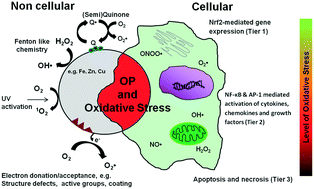Analytical methods to assess the oxidative potential of nanoparticles: a review
Abstract
Materials that contain fine or nanoscale particles are already produced in large quantities and are currently re-assessed. At the same time, there is ongoing development of new and innovative nanoparticles (NPs). Risk assessment strategies for NPs are of key importance, as their impact on ecosystems and humans is still not fully understood. However, in view of the increasing variety of NPs on the market, the testing of each individual material is too time-consuming and costly. A grouping of NPs based on their intrinsic properties of concern for possible toxicological effects would be a major improvement for risk assessment. So far, no unifying intrinsic particle properties have been identified that can be used across all materials for the determination of the possible pathogenicity of NPs. The formation of reactive oxygen species by particles represents an intrinsic property. It is often referred to as “oxidative potential” (OP) and is considered a promising grouping metric as several studies demonstrated an association between (nano-)particle exposure, OP and toxicological effects. However, other studies contradict these findings and these discrepancies might be due to OP-independent differences in the physico-chemical properties of particles and differences in study design, as well as to the heterogeneity of existing OP measurement assays. In this paper, we discuss and compare different methods to determine the OP of particles, their pros and cons and their potential applicability towards improved hazard assessment and grouping of NPs.



 Please wait while we load your content...
Please wait while we load your content...